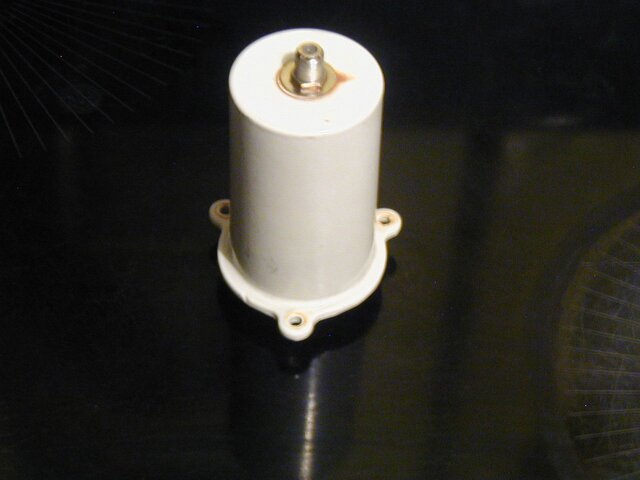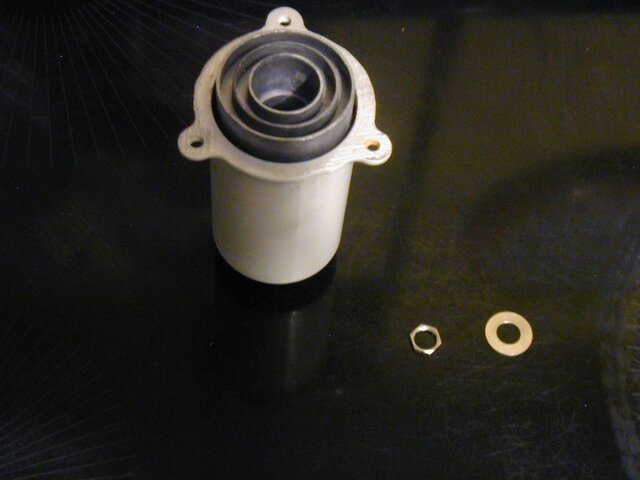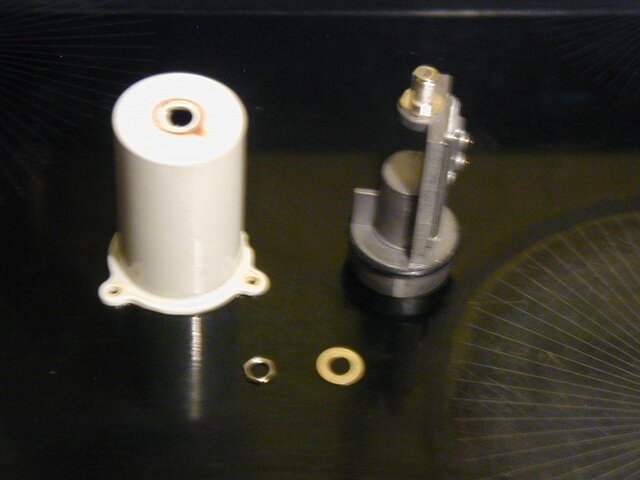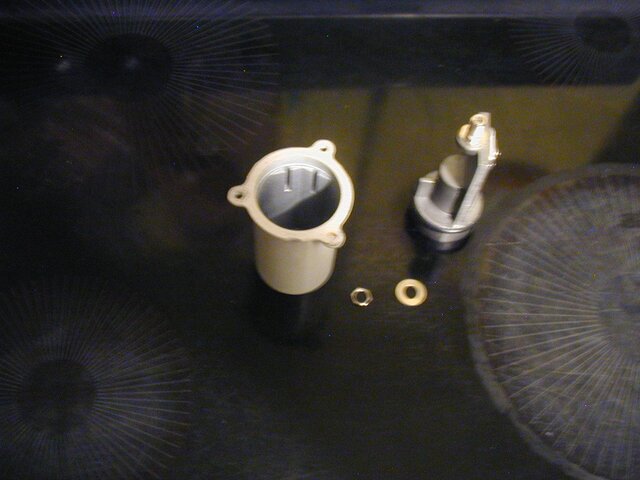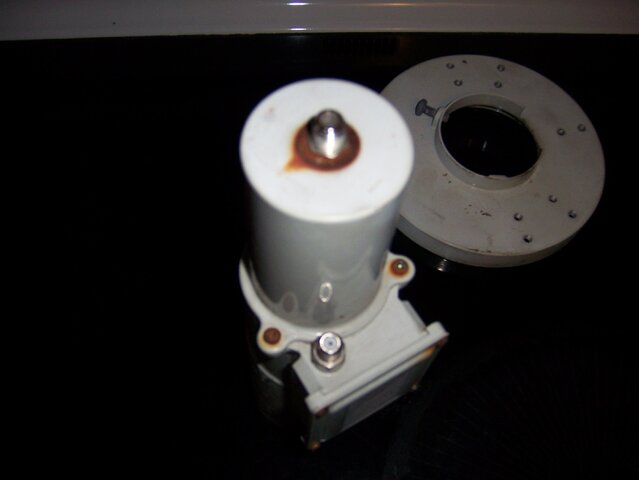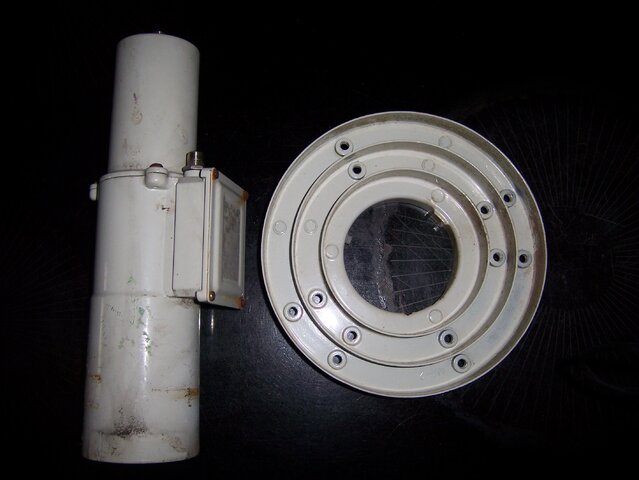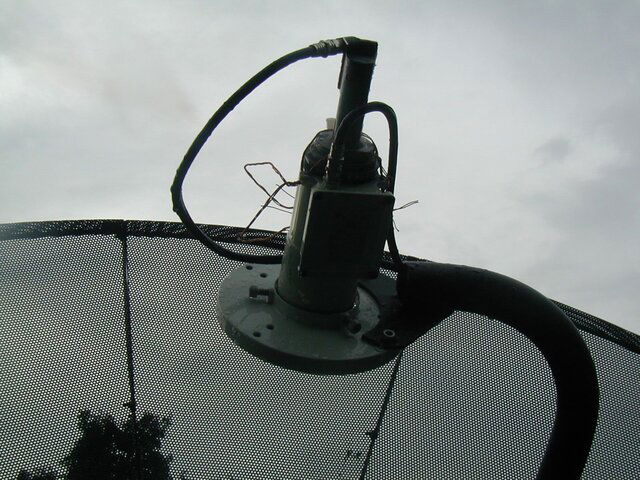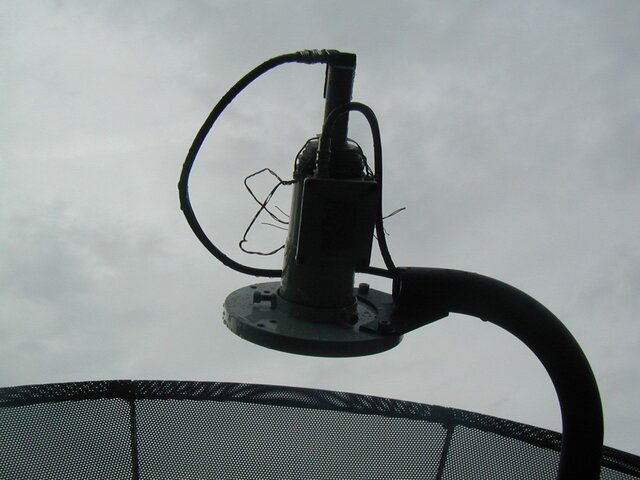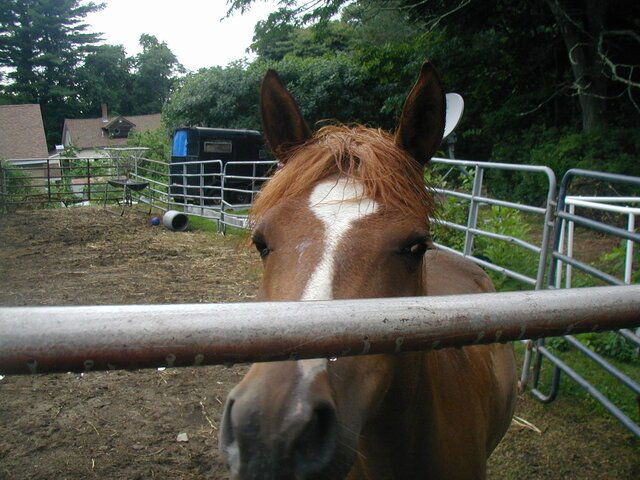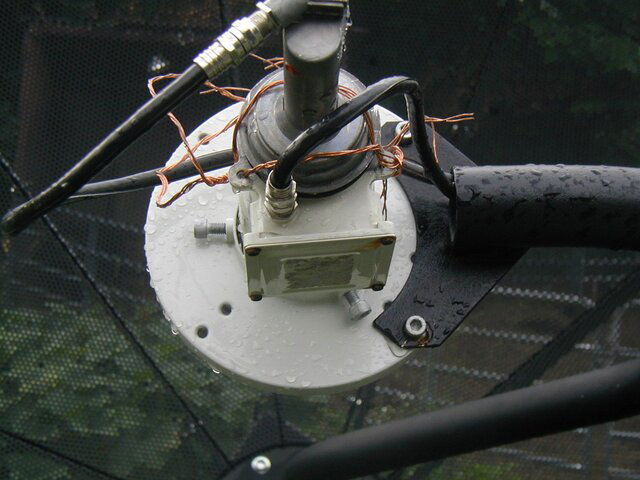Got bees into the C1WPLL on my 9' dish again, about a week ago. This time I didn't want to take the time moving them and just sprayed them and for whatever reason, it killed the C1, dead, no signal on nothing. I took it off the dish and couldn't see anything wrong with it, so I rinsed the barrel of it out, set it aside to dry out and try at a later date. I did pop a plastic plug into that stupid center hole on the C1's cap, so if it does work again, I won't get bees in it again!
So, I threw on a old DMX741 [I think it's a DMX741, there's no label on it] C/Ku combo LNBF that I have here and within the last week or so I'd noticed that the Ku side was drifting badly when it'd get hot out. The Ku part is held onto the back of the C section with three screws, so today I went out and removed the Ku part and strapped a Amiko Premium L-104 LNB over the hole where the original mounted and it worked pretty good, better than the drifting original did.
I then stripped the plastic housing and front cover off of the Amiko and mounted it back onto the DMX741 C section and wow, it works really good. Locked Cozi on 103W at 72% [MicroHD receiver] and the LPB stations on 87W that have a Q jumping from thirties to forties on my 30'' dish lock at 70%. Right now I just have the Amiko strapped to the DMX with wire, but I'm going to make a permanent mount for it sometime this week. Will take some pictures too, the batteries for my camera are MIA again, when I find and charge them, I'll take some pictures.
I didn't take my meter out and adjust it to optimum either, just strapped it on and made sure the skew of the Amiko was near zero, after I make a permanent mount for it I'll take the meter out to the dish and adjust it.
When I had the Ku section off of the DMX, I taped two strings across the hole on the C section in a cross-hairs and sighted down the barrel of the C section, looked like it was aimed right at the center of the dish. This made me think that maybe if LNBF's had a removable back cover, or a metal mesh with a dot in the center instead of a solid back, it might help with alignment of the LNBF? It also would help with cleaning out damn bees.
Although, a metal mesh might let the damn bees in, it'd have to be small mesh!
If the C1 does work again once I get around to trying it, I may cut a hole in the back of it and mount a Ku LNB onto it and see how it works. Worse case scenario would be I'd just have to cover the hole up if it doesn't work, which wouldn't be too bad.
So, I threw on a old DMX741 [I think it's a DMX741, there's no label on it] C/Ku combo LNBF that I have here and within the last week or so I'd noticed that the Ku side was drifting badly when it'd get hot out. The Ku part is held onto the back of the C section with three screws, so today I went out and removed the Ku part and strapped a Amiko Premium L-104 LNB over the hole where the original mounted and it worked pretty good, better than the drifting original did.
I then stripped the plastic housing and front cover off of the Amiko and mounted it back onto the DMX741 C section and wow, it works really good. Locked Cozi on 103W at 72% [MicroHD receiver] and the LPB stations on 87W that have a Q jumping from thirties to forties on my 30'' dish lock at 70%. Right now I just have the Amiko strapped to the DMX with wire, but I'm going to make a permanent mount for it sometime this week. Will take some pictures too, the batteries for my camera are MIA again, when I find and charge them, I'll take some pictures.
I didn't take my meter out and adjust it to optimum either, just strapped it on and made sure the skew of the Amiko was near zero, after I make a permanent mount for it I'll take the meter out to the dish and adjust it.
When I had the Ku section off of the DMX, I taped two strings across the hole on the C section in a cross-hairs and sighted down the barrel of the C section, looked like it was aimed right at the center of the dish. This made me think that maybe if LNBF's had a removable back cover, or a metal mesh with a dot in the center instead of a solid back, it might help with alignment of the LNBF? It also would help with cleaning out damn bees.
Although, a metal mesh might let the damn bees in, it'd have to be small mesh!
If the C1 does work again once I get around to trying it, I may cut a hole in the back of it and mount a Ku LNB onto it and see how it works. Worse case scenario would be I'd just have to cover the hole up if it doesn't work, which wouldn't be too bad.



